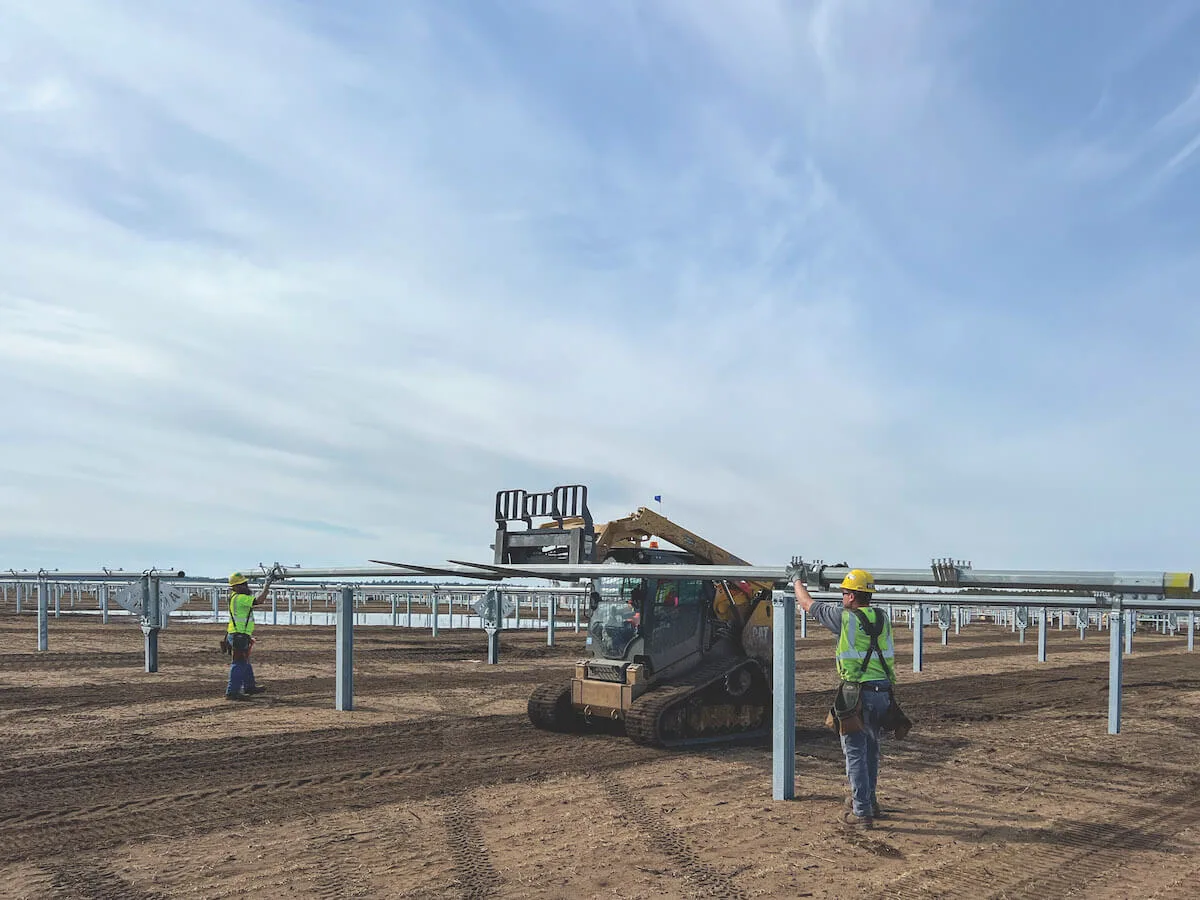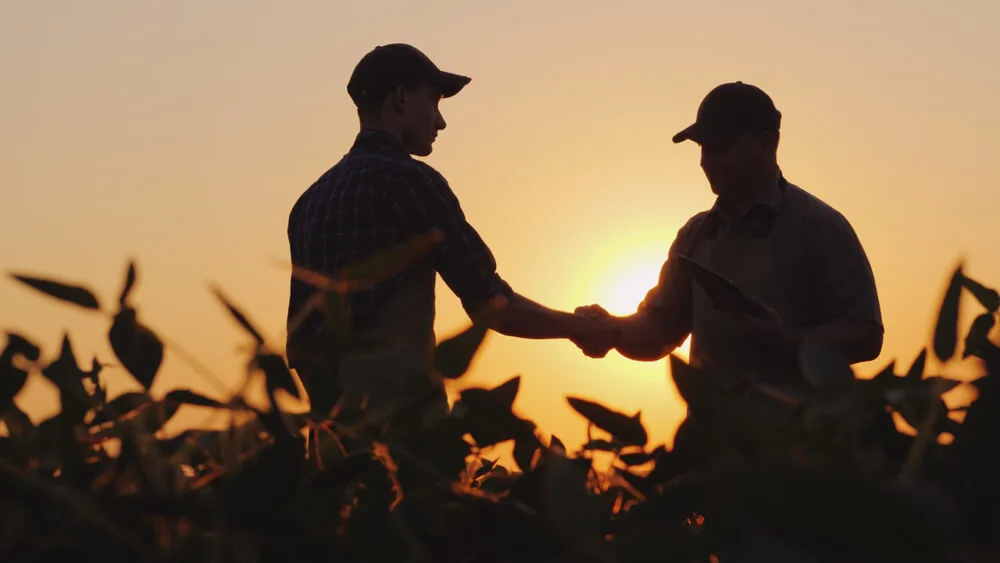
Operator William Pongratz installs racks to hold solar modules with carpenters Dennis Siekert (left) and Marcus Nilsestuen (right) for AZCO, Inc. at Alliant Energy’s Wood County Solar Farm in Nekoosa. (Photo provided)
Green energy requires fewer workers to operate, so it’s vital that construction for these industries be done by local workers with high quality standards.
As sure as the sun will come up tomorrow, clean energy development in Wisconsin is about to take off. Just this month, the Public Service Commission of Wisconsin (PSC) approved the largest solar energy project in state history. Dozens more developments are in the planning stage, which means that if the state gets this right, the opportunity is there to make this one of the most exciting periods for job creation and economic growth in memory.
According to new research from the Midwest Economic Policy Institute (MEPI) and the Fiscal and Economic Research Center at the University of Wisconsin-Whitewater, the State of Wisconsin’s stated goal of transitioning to 100% renewable energy by 2050 could grow the state’s economy by more than $20 billion and create more than 34,000 jobs. To date, Wisconsin has trailed its counterparts in the Midwest. Each of the states we border generates a higher percentage of its energy production from renewable sources and a lower percentage from fossil fuels.
Compared to fossil fuels, renewable energy sources like wind and solar cause less pollution, are increasingly competitive in terms of cost, and are essential to confronting the climate crisis, as outlined by the latest UN climate report. Given those realities, it should come as no surprise that Wisconsin’s utilities, ratepayers, and policymakers are supportive of utility-scale renewable energy developments.
They should be. They should also understand the value of high road labor standards in transitioning to that cleaner energy future. These developments have the potential to rejuvenate local economies, but only if local, Wisconsin workers get the jobs. As other states have surged past us in terms of renewable energy developments, they’ve missed out on opportunities to maximize the economic benefits by letting developers rely on out-of-state laborers who spend their paycheck back home instead of in the communities they’re working in.
Ensuring Wisconsin workers are hired to build these projects is paramount. Once online, these renewable energy facilities require fewer workers to maintain and operate than, for example, coal fired plants. One recent analysis of two 150 megawatt (MW) solar power developments revealed that the use of out-of-state workers rather than Wisconsin workers would cost Wisconsin $91 million in lost economic activity and over 200 construction jobs.
Those two developments represent a drop in the bucket in terms of the overall development Wisconsin is about to see in this sector. Nearly 5.8 gigawatts (GW) of solar power and 1.2 GW of wind power projects are already in development, and the state will need to double that to reach its stated goal of generating 100% of needed electricity from carbon free sources by 2050.
Simply put, there’s a ton of work that needs to be done to build this cleaner energy future. Every job required to complete that work on a solar or wind development in Wisconsin is an opportunity for a good job with family-sustaining wages and benefits, training, and strong health and safety protections. Which brings us back to the MEPI report, paying workers prevailing wages, instituting project labor agreements (PLAs), and ensuring responsible bidder provisions are standard operating procedures for these developments will create high-quality jobs without raising costs or impacting developers’ bottom lines.
The analysis by MEPI makes clear that workers and communities can and will benefit from the growing renewable energy economy in our state if we do it that way. The right way. It’s on all of us to let utility companies and policymakers know that’s what we all expect as we move our state forward. It’s the dawn of new energy day in Wisconsin.

New Biden rules deliver automatic cash refunds for canceled flights, ban surprise fees
In the aftermath of a canceled or delayed flight, there’s nothing less appealing than spending hours on the phone waiting to speak with an airline...

One year on the Wienermobile: The life of a Wisconsin hotdogger
20,000+ miles. 16 states. 40+ cities. 12 months. Hotdogger Samantha Benish has been hard at work since graduating from the University of...

Biden makes 4 million more workers eligible for overtime pay
The Biden administration announced a new rule Tuesday to expand overtime pay for around 4 million lower-paid salaried employees nationwide. The...

‘Radical’ Republican proposals threaten bipartisan farm bill, USDA Secretary says
In an appearance before the North American Agricultural Journalists last week, United States Department of Agriculture (USDA) Secretary Tom Vilsack...




